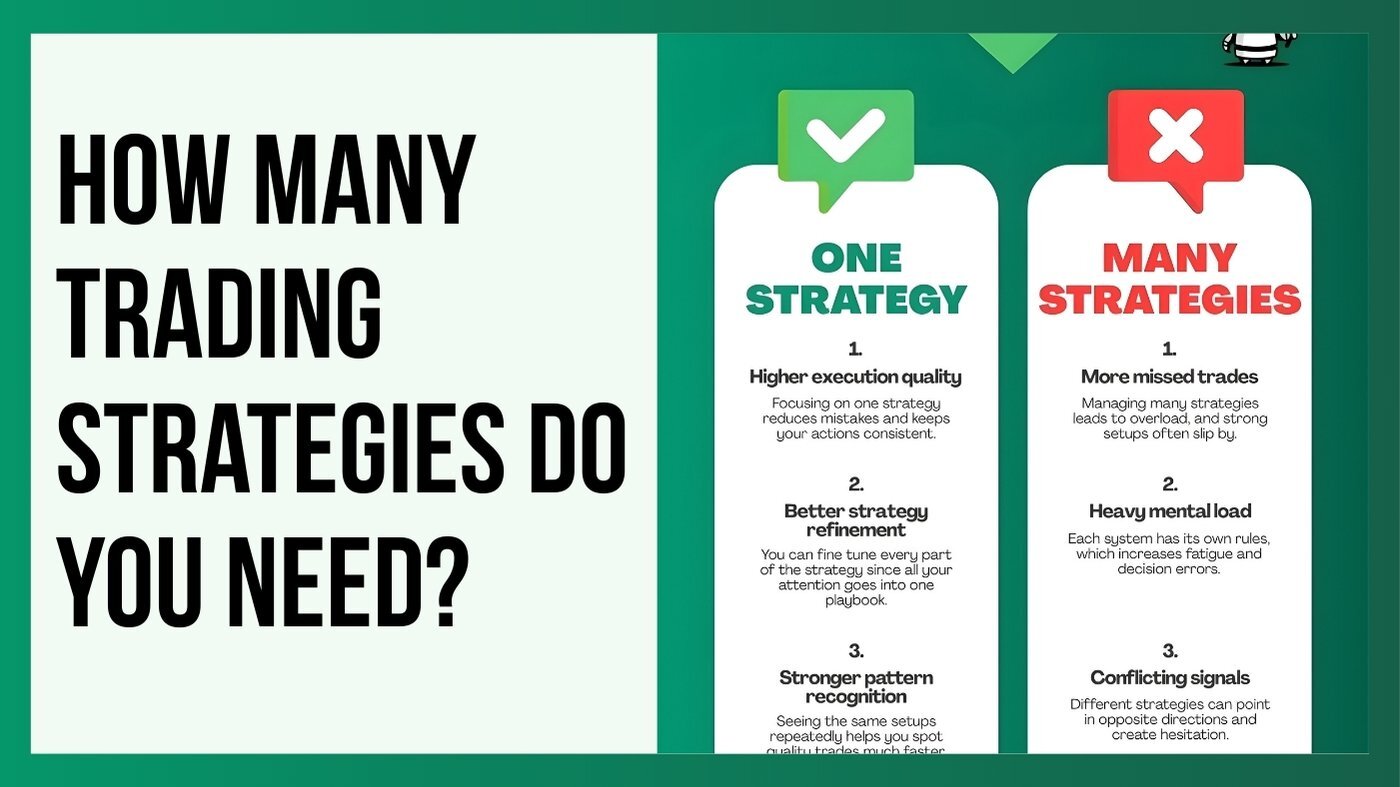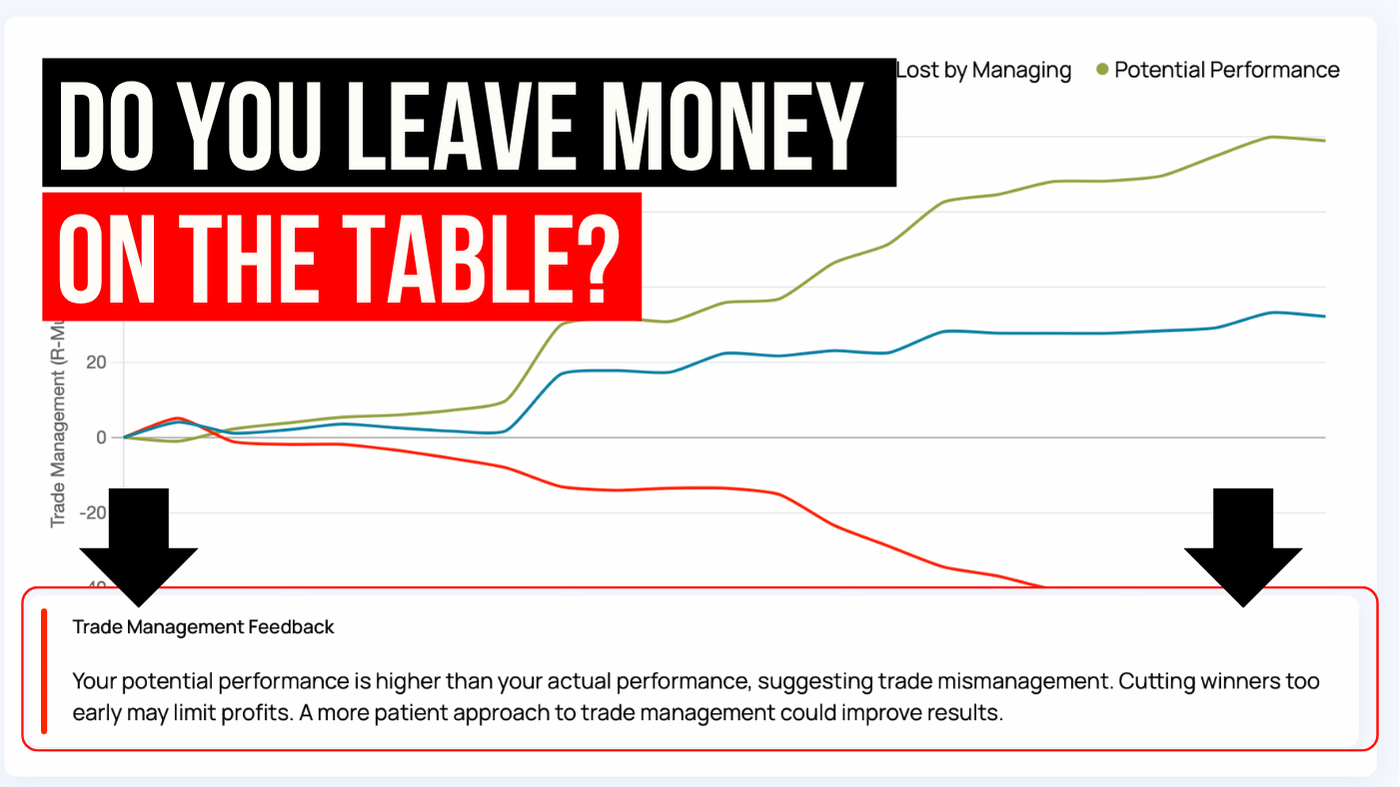Top Custom Trading Statistics Every Trader Should Track
Custom statistics can turn a trading journal into a powerful source of insight because they show the specific conditions that shape your performance....
5 min read
Rolf Sep 3, 2024 2:43:07 PM
.png)
When it comes to being successful in the markets, one of the first decisions every trader must make is selecting a trading style that suits their personality, goals, and lifestyle. Whether you are a novice trader or a seasoned professional, understanding the distinctions between day trading, swing trading, scalping, and investing is important to setting up your trading for success. Each style has its unique characteristics, benefits, and challenges. This guide will help you decide which trading style aligns best with your objectives.
Day trading involves buying and selling financial instruments within the same trading day. This style is characterized by a high frequency of trades, often closing out positions before the market closes to avoid overnight risks.
Time Commitment: Day trading requires significant time and attention. Traders need to monitor the market closely throughout the day, or at least for 1-2 hours per day (usually more), usually around the trading session opening times, making quick decisions based on short-term price movements.
Capital Requirements: Typically, day trading can be done with smaller account sizes due to the leverage brokers hand out. US traders in the equities market must meet the pattern day trader (PDT) rule, which mandates a minimum equity of $25,000 in the account.
Skills and Tools: Success in day trading demands a solid understanding of technical analysis, chart patterns, and market indicators. Advanced trading platforms and tools are essential to execute rapid trades efficiently. Day traders also need to be emotionally resilient because new trading signals come up constantly, requiring traders to make good decisions quickly.

Swing trading sits between day trading and long-term investing. It involves holding positions for several days or weeks to capitalize on expected price moves.
Time Commitment: Swing trading is less time-intensive than day trading. Traders often analyze the market in the evenings or early mornings to set up trades, but they don’t need to monitor the market constantly during the day.
Capital Requirements: While swing trading also requires a decent amount of capital, the demands are typically less stringent than those for day trading. To make meaningful returns, you typically want a larger account than a day trader.
Skills and Tools: Swing traders typically rely on both technical analysis and fundamental analysis. They look for stocks or other assets that are poised for short- to medium-term price changes and may use a mix of chart patterns, moving averages, and news events to inform their decisions.

Scalping is a fast-paced trading style focused on making a large number of small profits on very short-term trades. Scalpers might enter and exit a trade within seconds or minutes.
Time Commitment: Scalping requires constant attention and a deep focus on the market. Traders must be quick on their feet and able to make instant decisions, as opportunities are fleeting.
Capital Requirements: Scalping, like day trading, can be done on small accounts. Keep in mind that the transaction costs in relation to your profits will be much higher, which is why you will need a greater edge.
Skills and Tools: Scalping demands precision and the ability to execute trades rapidly. This style is highly dependent on advanced trading platforms that offer quick execution and low latency, and a good internet connection.
Scalpers need the strongest trading mindset because they need to perform at their peak for hours at a time. Scalpers cannot afford to let their past trading results influence their trading decisions.

Investing involves buying assets with the intention of holding them for the long term, often years or even decades. This style is rooted in the belief that, over time, the value of the investment will increase.
Time Commitment: Investing is the least time-intensive style. Once investments are made, they require minimal daily attention, though periodic reviews are essential. Finding good investments can be done on the weekend and requires a lot of pouring through data and reading material.
Capital Requirements: Investing can begin with any amount of capital, though larger investments can lead to more significant returns due to the compounding effect. A larger trading account enables investors to diversify by entering multiple positions simultaneously. This diversification can be advantageous, as it allows investors to spread risk across different assets. Additionally, with more capital, investors have the flexibility to hold positions for longer periods, potentially capturing more significant market movements without the immediate need to liquidate due to capital constraints.
Skills and Tools: Investors in the stock market often focus on fundamental analysis, looking at a company’s financial health, industry position, and growth potential. In other asset classes, like Forex, the economy of a whole country is compared to that of another country, which requires a lot of knowledge in these fields. Patience and a long-term perspective are crucial.

|
Trading Style |
Pros |
Cons |
|
Day Trading |
- Potential for quick profits within a single day, and thus, faster compounding of your capital. |
- High stress due to the fast pace and constant decision-making and typically more time commitment. |
|
Swing Trading |
- More flexibility compared to day trading. |
- Overnight risk due to holding positions for several days. |
|
Scalping |
- Many trading opportunities within a single day. |
- Extremely time-consuming and mentally demanding. |
|
Investing |
- Potential for significant long-term gains. |
- Requires patience and a long-term perspective. |
Time Availability How much time you can dedicate to trading is a crucial factor. If you have a full-time job or other commitments, investing or swing trading might be more suitable. Day trading and scalping, on the other hand, require full attention during market hours.
Risk Tolerance Your ability to handle risk is another critical consideration. Day trading and scalping are inherently riskier due to their reliance on short-term price movements, while investing is typically less volatile but requires patience to weather market downturns.
Financial Goals What are you aiming to achieve with your trading? If you're looking for quick profits, day trading or scalping might be appealing. However, if you’re focused on building wealth over time, investing or swing trading could be a better fit.
Trading Experience Beginners may find investing or swing trading more approachable, as they allow for more time to make decisions and less frequent trading. Experienced traders, comfortable with market dynamics and quick decision-making, might find day trading or scalping more suitable.
Psychological Comfort Your psychological makeup plays a big role in your trading success. High-speed trading styles like scalping and day trading require the ability to stay calm under pressure and make rapid decisions without second-guessing. Investing, in contrast, rewards patience and a long-term outlook.
The Edgewonk trading journal is designed to allow journaling trades in all trading styles, but depending on which type of trader you are, different journaling approaches can be utilized.
Day Trading and Scalping: For day traders and scalpers, journaling at the end of each trading day is important while the details are still fresh in your mind. This daily journaling habit allows you to quickly identify patterns—both positive and negative—in your trading behavior. By reviewing your trades daily, you can make necessary adjustments before the next trading session, helping you to refine your strategies and avoid repeating mistakes.
Swing Trading and Long-Term Investing: Swing traders and long-term investors typically have a different journaling cadence, often reviewing and recording their trades at the end of each week. Since these traders take fewer positions and hold them over longer periods, there's more time to reflect on each trade. This weekly review process allows you to analyze your trades without the immediate pressure of daily market fluctuations. Identifying negative patterns early on is still important, but the less frequent trading activity provides a buffer, reducing the immediate impact of any single trade on your overall performance.
Choosing the right trading style is a personal decision that should be based on your circumstances, including your financial goals, risk tolerance, and lifestyle. Here's a quick recap:
Day Trading: Best for those who have time, can handle high stress, and are looking for quick profits.
Swing Trading: Suitable for traders who want to balance their trading with other commitments and can handle holding positions for days or weeks.
Scalping: Ideal for those who enjoy a fast-paced environment and are looking for frequent, small gains.
Investing: Perfect for individuals with a long-term perspective, looking to grow their wealth steadily over time.
No matter which trading style you choose, success in trading comes from discipline, continuous learning, and adapting to market conditions. Start by understanding your strengths and weaknesses, and select the trading style that aligns with your personality and financial objective – because edge is unique to you. There are as many edges as there are profitable traders out there.
The first key to long-term success in the markets is about choosing a trading style that fits you. Happy trading!

Custom statistics can turn a trading journal into a powerful source of insight because they show the specific conditions that shape your performance....

Choosing how many trading strategies you should trade is one of the most important decisions for long term success. Many traders believe that more...

Many traders know how to enter a position but become uncertain once the trade is active. This is the moment when emotions influence decisions, exits...